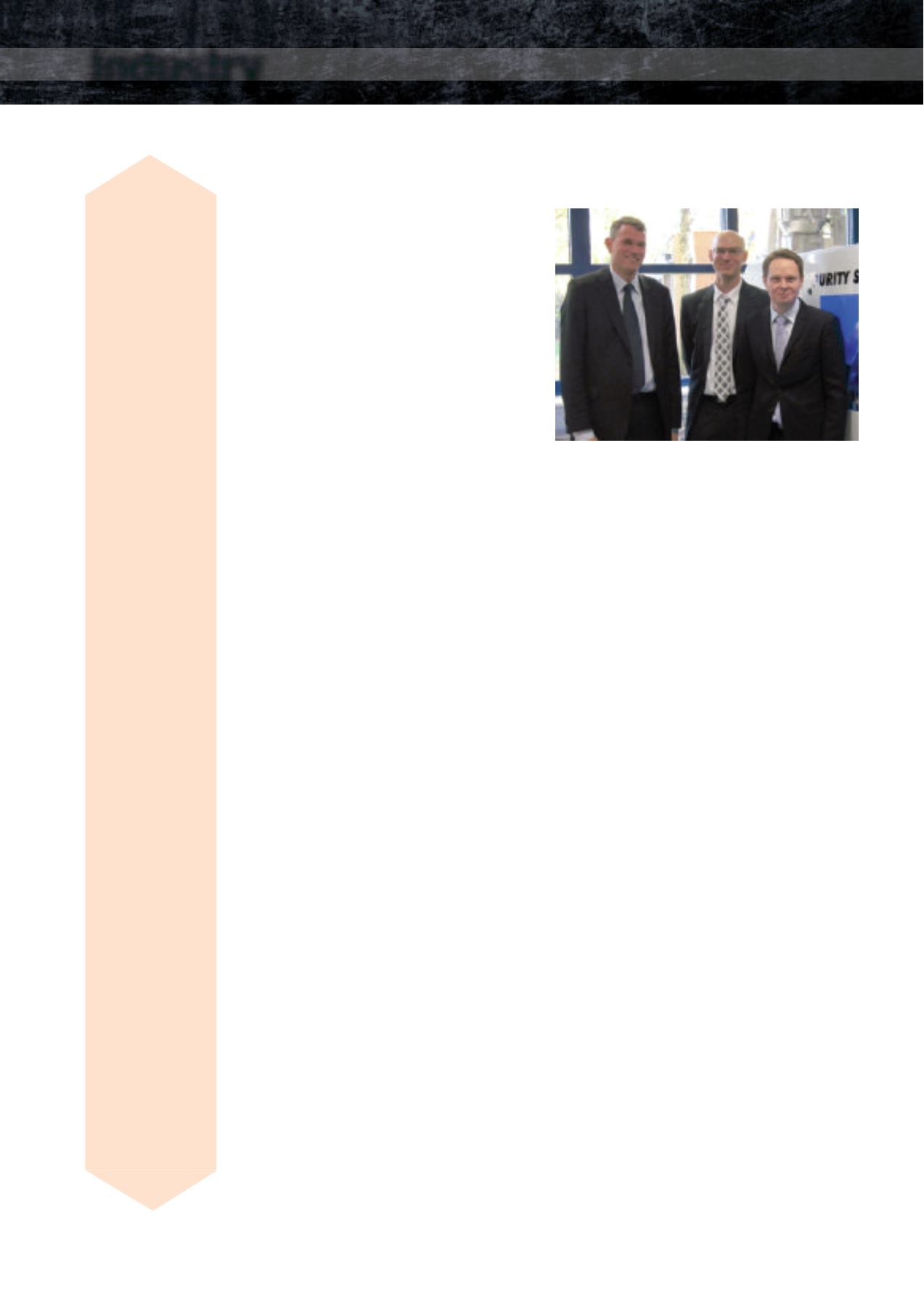

10
Wire & Cable ASIA – July/August 2014
www.read-wca.comIndustry
news
CUSTOMER demands significantly determine
which new technologies are pushed by Sikora.
Two years ago Maillefer raised urgent questions
about the possibilities for the development of a
system for the detection and sorting of
contaminations in plastic pellets.
The reason for the need of such a system was –
and is – the continuously increasing demand for
renewable energies in the international energy
market. “The worldwide installed capacity has
already increased from 1,250 GW (2010) to
1,700 GW (2013),” states the International
Energy Association (IEA).
A part of this is supplied by wind turbines in
offshore wind farms. For the power transmission
to the mainland, submarine cables are used,
which have to fulfil sophisticated requirements
due to the specific environmental conditions.
Therefore, the cable structure and its production
process must follow national and international
standards.
In these regards, the purity of the XLPE
compound plays a critical role, especially with
regard to the insulation: the purer the
compound, the lower the risk of a breakdown. It
is for that reason that the Chinese Standard for
high voltage cables, for example, demands the
exclusion of contaminations from 75µm in the
processed materials.
A very important aspect has always been the
cable joint, specifically with high voltage cables
for off-shore applications. The joints where the
cables are welded together are always critical.
Therefore, energy suppliers want cable
manufacturers to deliver large cable lengths with
a minimum amount of joints, as each joint
contains a potential risk for breakdowns.
Consequently, the aim is to produce energy
cables with long lengths with only a few joints
while using highly pure raw material.
In order to catch possible impurities in the XLPE
compound before they get into the cable, cable
manufacturers use screens which are positioned
directly in the melt flow after the extruder, before
the crosshead and, thus, prevent the
contaminations from entering the product. But
these screens can get clogged by degraded
XLPE, ie scorches, or excessive amounts of
contaminants after certain run time and then the
melt pressure in the extruder may increase
significantly. Finally, the production has to be
stopped in order to change the screens, which
in turn means that a joint is later required at that
position.
A solution to this problem is a system which
inspects the pellets for purity before the XLPE
pellets get into the extrusion process. Currently
installed devices use optical measuring
principles that randomly inspect pellets for
contaminations. Since this is a sample check,
not all of the material is controlled. Furthermore,
with optics, only the outside of the pellet can be
inspected, while impurities inside the pellets
remain undetected. Moreover, the inspection of
the raw material with existing devices is not
done under clean room conditions, so new
impurities can emerge from the ambient air or as
a result of the conveyor belt used.
In initial experiments, various sensors were
tested in order to ensure a reliable detection of
contaminations with a size of 50µm. It soon
became clear that Sikora had the know-how to
develop the appropriate technology to meet
Maillefer’s requirements.
With the newly developed Purity Scanner,
metallic and organic contaminations not only on
the surface but also inside the pellet can be
detected. The system applies for XLPE
compounds as they are used in the production
of medium, high and extra-high voltage cables,
as well as underground and submarine cables,
including semi-conductive XLPE compound.
With the combination of X-ray and optical
technologies, a system was developed which
inspects 100 per cent of the pellets for purity
before they enter the production process.
Rejected XLPE pellets are reliably sorted out.
The transport of the pellets is carried out via a
vibrating ramp. This transport system is
hermetically sealed with the result that no
external impurities get into the material flow.
Sikora AG – Germany
Website
:
www.sikora.comMaillefer – Switzerland
Website
:
www.mailleferextrusion.com100 per cent quality control cooperation
❍
The Purity Scanner is the result of technological
cooperation between Maillefer and Sikora. From
left: Member of the board Dr Christian Frank, head
of R&D Dr Siegmar Lampe (both Sikora AG), and
MV/HV process specialist Timo Mäkelä, of
Maillefer
Among the
sponsors of the
recent McDermott
Charity Golf
Classic, held in
Dubai, was Silver
Fox, a UK
manufacturer of
labelling
solutions.
The event, which
raised many
thousands of
dollars for charity,
was held over two
days – at the
Jebel Ali Golf
Resort on 12
th
March, and The
Els Club, Dubai
Sports City the
following day.
Appropriately,
Silver Fox was a
silver sponsor of
the two-day
event.
Commenting on
the event, which
is organised
annually by the
Dubai-based
engineering
company J Ray
McDermott
Middle East, Nick
Michaelson, CEO
of Silver Fox,
said: “It was a
great pleasure to
be at this year’s
event and play
our part in it as
sponsors. Not
only was there
some great golf
played, in fine
settings, but we
were able to help
raise many
thousands of
dollars for a very
worthy cause.”
Silver Fox
turns silver
sponsor

















